A tour of Greenland with the country's first female prime minister
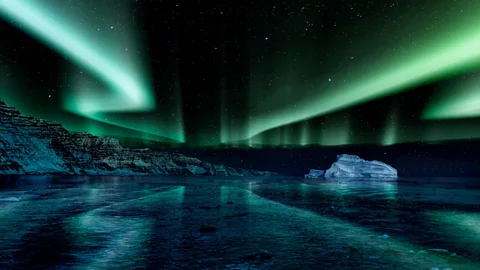 Alamy
AlamyGreenlandic politician and Inuit educator Aleqa Hammond shares her top ways to experience the country, from sampling Greenlandic cuisine to viewing the Northern Lights in Ilulissat.
At a staggering 2.16 million sq km, Greenland is the world's largest island – and its least densely populated. A colossal ice sheet covers roughly 80% of its mass; most of the population (56,000) lives in urban areas along its south-west coast.
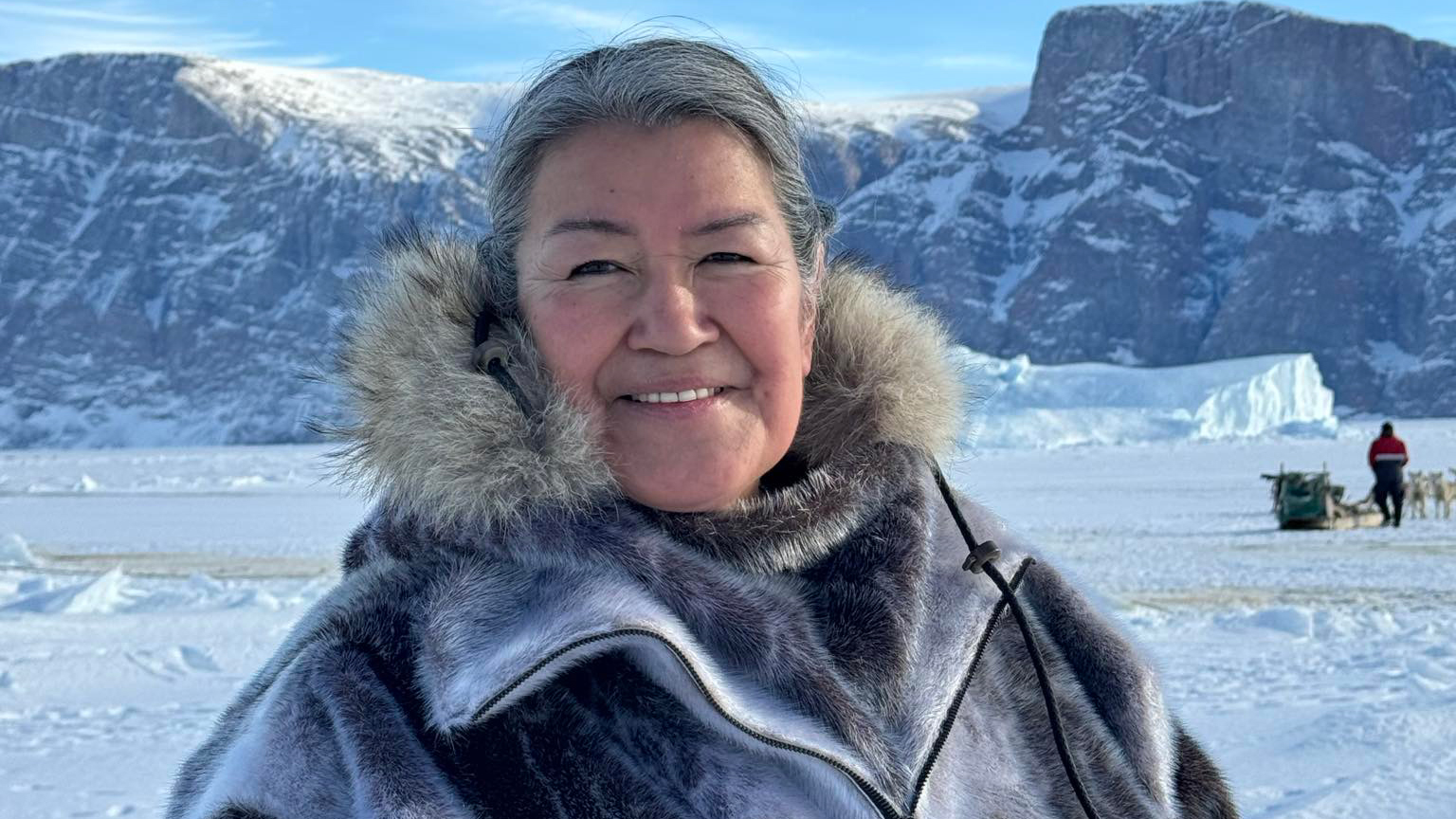
The Specialist
Aleqa Hammond is a politician and former member of the Greenland Parliament. Her political career began in 2005 when she held various ministerial roles, including Minister of Finances and Foreign Affairs. In 2013, she became Greenland's first female Prime Minister.
But Greenland still attracts visitors with its stunning natural backdrop of glaciers and icebergs. Adventurers enjoy kayaking, hiking and dog sledding in the vast wilderness. The midnight sun, Northern Lights and colourful villages only add to this Arctic destination's allure.
We asked Aleqa Hammond, Greenland's first female prime minister (2013-2014), how to explore this land of contrasts. "Greenland is so vast and huge and undiscovered in many ways that after the Ilulissat Icefjord received a World Heritage site designation in 2004, it was not recognised by Unesco again for another 13 years," she says. "It has three now, which shows that the country has so much to offer."
In November 2024, Nuuk International Airport opened in the country's capital. And in 2026, two more international airports will open – in Ilulissat, Greenland's third-largest city, and Qaqortoq, in southern Greenland. As Greenlanders prepare for an influx of visitors, Hammond is optimistic. "Everybody wants this change because we want to have a stronger economy, and we want to be more self-sufficient."
According to the Greenlandic Ministry of Business, Trade, Mineral Resources, Justice and Gender Equality, over the past five years, tourism in Greenland has grown by 46%; primarily due to a surge in demand from travellers eager to explore new destinations after Covid-19 – particularly those with wide-open spaces. The numbers are expected to rise with the new airports.
But "Greenland does not want mass tourism," says Hammond. "Greenland wants better tourism. We want tourism that's to the benefit of the people of this country, not to overwhelm us. It's going to be a very controlled place, and that makes it special."
Here are Hammond's favourite ways to experience Greenland.
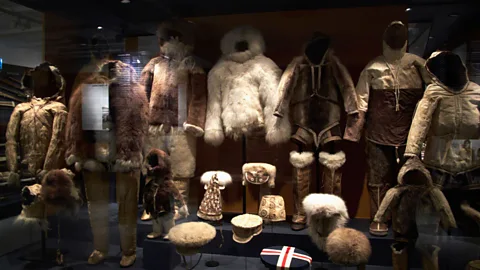 Alamy
Alamy1. Best place to discover Greenland's history: Greenland National Museum & Archives
Nuuk, Greenland's capital, is home to approximately 20,000 residents. But "it's very much a metropolitan city", says Hammond. "There's museums, there's cafes, there's so many shopping opportunities and concerts, it's so alive."
Located in Nuuk's Colonial Harbour, the Greenland National Museum & Archives is a fascinating place to delve into the country's history and culture. "The museum is absolutely worth visiting," Hammond says. "It's well organised and it's doing a lot of archaeological excavations in remote places in Greenland."
The best of 2025
Greenland was named one of BBC Travel's 25 best places to visit in 2025, a list highlighting destinations that are not only welcoming visitors, but using tourism as a force for good. See the full list here.
The museum's exhibitions cover a vast span of Greenland's history, from the first Paleo-Eskimo cultures that arrived thousands of years ago to a period of Norse settlement in the 10th Century and Thule migration in the 13th Century, followed by Danish colonisation in the 18th Century.
The museum is also known for its collection of well-preserved Qilakitsoq mummies – the naturally mummified remains of a family from Northern Greenland's Paleo-Eskimo Saqqaq culture, who lived sometime between 2500 BCE to 800 BCE. "They are the oldest mummies in the world of Inuit heritage," says Hammond, who is Inuit as well as a respected Inuit educator and former commissioner of the Inuit Circumpolar Council. "These mummies were found in 1972 in the Uummannaq area of North Greenland, where I'm from."
Exhibiting the mummies hasn't been without controversy. "It was a big discussion back then whether they should belong to a museum or not, and a lot of Greenlanders were not very happy that they ended up there," Hammond says. "Today, everybody's satisfied because [of] world interest on how the Inuit have been living and are living, and what cultural heritage we have. This is the oldest proof."
Website: https://en.nka.gl/
Address: Hans Egedesvej 8, Box 145, 3900 Nuuk
Phone: +299 32 26 11
Instagram: @natmus_gl
 Alamy
Alamy2. Best place to enjoy Greenlandic cuisine: Restaurant Sarfalik
When it comes to fine dining in Nuuk, one of Hammond's favourites is Restaurant Sarfalik, which is located on the top floor of the upscale Hotel Hans Egede in the city centre. Sarfalik specialises in showcasing the best of Greenlandic cuisine, with a focus on fresh, seasonal ingredients sourced from local hunters and fishermen. A blend of Inuit tradition and survival, cooking techniques include drying, fermenting and smoking.
"Using local ingredients is a trend in Greenland," Hammond says. "We have such great resources, and each town has its own open fish and meat market with a choice of musk ox, reindeer, halibut and cod. Everything is there."
Sarfalik has an open layout with a cosy brasserie feel, and the menu features traditional Greenlandic fare with a modern twist as well as internationally inspired creations. There's also a tasting menu that allows for sampling various entrees. "It's not enormous plates, but very beautiful and wonderfully made," Hammond says. "It's a gastronomic experience."
Website: https://hhe.gl/restaurant-sarfalik/?lang=en
Address: Hotel Hans Egede, Aqqusinersuaq 1 3900 Nuuk
Phone: +299 34 80 00
Instagram: @sarfalik
 Alamy
Alamy3. Best place to experience Greenland's arts scene: Nuuk Art Museum
A significant cultural hub, Nuuk Art Museum features a mix of Greenlandic and international art. "Because we have many artists in Nuuk, it's very well-visited, and it's a big museum that's absolutely worth a trip," says Hammond.
A gift from Danish-Greenlandic philanthropists Svend and Helene Junge Pedersen to the people of Nuuk, the museum is situated in city centre in a former Adventist church, striking for its high ceilings, wooden beams and stained-glass windows. In addition to exhibitions, the museum also hosts events, workshops and educational programmes, such as an art walk around the city that can be downloaded as a podcast.
Its primary focus is to showcase the work of Greenlandic artists and the depiction of Greenland in art. This includes a significant number of works by early 20th-Century landscape artist Emanuel A Petersen, known for his romanticised portrayals of Greenlandic nature. The museum's exhibits showcase a variety of media, including paintings, watercolours, drawings and sculptures made from materials like soapstone, ivory and wood.
"Greenlandic art is an expression of Inuit culture, which is deeply connected to the land, wildlife and Arctic traditions," Hammond says. "Our spirits, legends, and traditional beliefs are also often depicted, as well as animals important for survival like seals, whales and polar bears."
Website: https://www.nuukkunstmuseum.com/
Address: Kissarneqqortuunnguaq 5, 3900 Nuuk
Phone: +299 36 60 33
Instagram: @nuukartmuseum
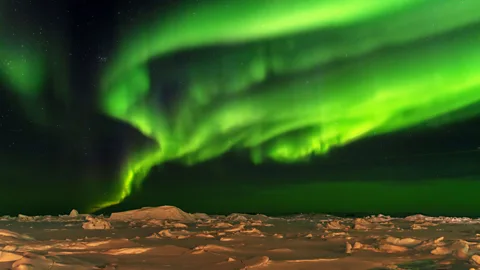 Getty Images
Getty Images4. Best place to view the Northern Lights: Ilulissat Icefjord
Depending on the time of year, the Northern Lights are literally all around. "It's like trees," Hammond says. "You don't really notice them unless one specific tree is really beautiful. We don't have trees here, but there's a lot of Northern Lights."
Tip
To view Greenland's Northern Lights, "from September until February is a perfect time", says Hammond. "Greenland has long, dark nights during this period, and clearer skies compared to other seasons. When we know that there's going to be a very good Northern Lights night, we put on a lot of clothes, bring our tea and take a hike around the village. Then we just sit there and enjoy it. And nobody says a word for a very long time, because this beauty is so much more than 1,000 words."
Despite their frequent occurrence, the Northern Lights are also a reminder of Hammond's heritage, so she never takes them for granted.
"The Northern Lights have both entertainment and cultural value," she says. "We know who they are – that's our ancestors, and that's why we love watching them. We honour our ancestors a lot, and we can always see them in our environment. In Greenland, you can see them in the sky."
Witnessing the Northern Lights is especially meaningful at the Ilulissat Icefjord, a deep sea inlet filled with massive icebergs. A Unesco World Heritage site, it is one of the fastest moving and most active glaciers in the world, moving around 40m per day.
"It's very easy to walk out to the Icefjord at night because there's a boardwalk and you can take it out to a bench with the best view in the world," Hammond says. "Sit on that bench and you'll be right in front of the icebergs. The Northern Lights give a special light to the icefjord, and the icebergs get another glow, another colour. It's the ultimate Northern Lights experience."
Located on the west coast, Ilulissat is about 250km north of the Arctic Circle. Historically a fishing village, it is also known for its sled dogs. The Icefjord is a short bus ride from town and the boardwalk is easily accessible as it extends from the car park.
The Ilulissat Icefjord Centre is situated on the edge of the icefjord and provides interactive displays, artefacts and scientific data.
Website: https://isfjordscentret.gl/en/ilulissat-icefjord-centre/
Address: Sermermiut Aqqutaa B 2089, 3952 Ilulissat
Phone: +299 55 55 88
Instagram: @ilulissat_isfjordscentret
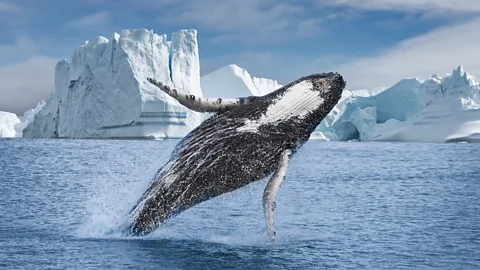 Getty Images
Getty Images5. Best way to view Arctic wildlife: By land and by cruise
Greenland is as famous for its epic wildlife as it is for its stunning Northern Lights. Depending on the region, you might see reindeer, musk oxen, polar bears, Arctic foxes and a variety of whales – including elusive narwhals with their unicorn-like tusks.
Hammond suggests admiring the island's wildlife via both land and sea by combining a city break with an expedition cruise like Adventure Canada, which offers six Greenland itineraries with plans to expand to East Greenland in 2025.
The best chance to spot polar bears is in East Greenland because, according to Hammond, "the big impact of the North Pole ice melting is that they are all going that way". Arctic wildlife – both marine and mammal – can be spotted via a small ship cruise or by hiking the Arctic Circle Trail. Because polar bears are powerful predators, observing them from a ship provides a safe vantage point and minimises risks. Arctic cruises are the best ways to spot marine wildlife, especially whales, seals and walruses.
"Fly into Greenland first, and then take your own trip, maybe from Nuuk to Ilulissat or vice versa, and go on from there," she says. "You can come in a few days ahead of time and experience the authentic Greenland for yourself by partaking in activities like hiking before you embark on the cruise. Greenland has incredible hiking trails, and the further you venture into the wilderness, the more likely you are to encounter animals."
BBC Travel's The SpeciaList is a series of guides to popular and emerging destinations around the world, as seen through the eyes of local experts and tastemakers.
--
If you liked this story, sign up for The Essential List newsletter – a handpicked selection of features, videos and can't-miss news, delivered to your inbox twice a week.
